Dorgi vs Corgi (Comparison and Key Differences) With Photos
For centuries, people have bred and adored Corgis. Recently, breeders realized that by crossing lovable Corgis with Dachshunds, they can breed feisty and lovable Dorgis.
Which breed is best suited for you and your family? There are many similarities between Corgis and Dorgis, but there are also several key differences. Continue reading to make an informed decision about the newest member of your family.
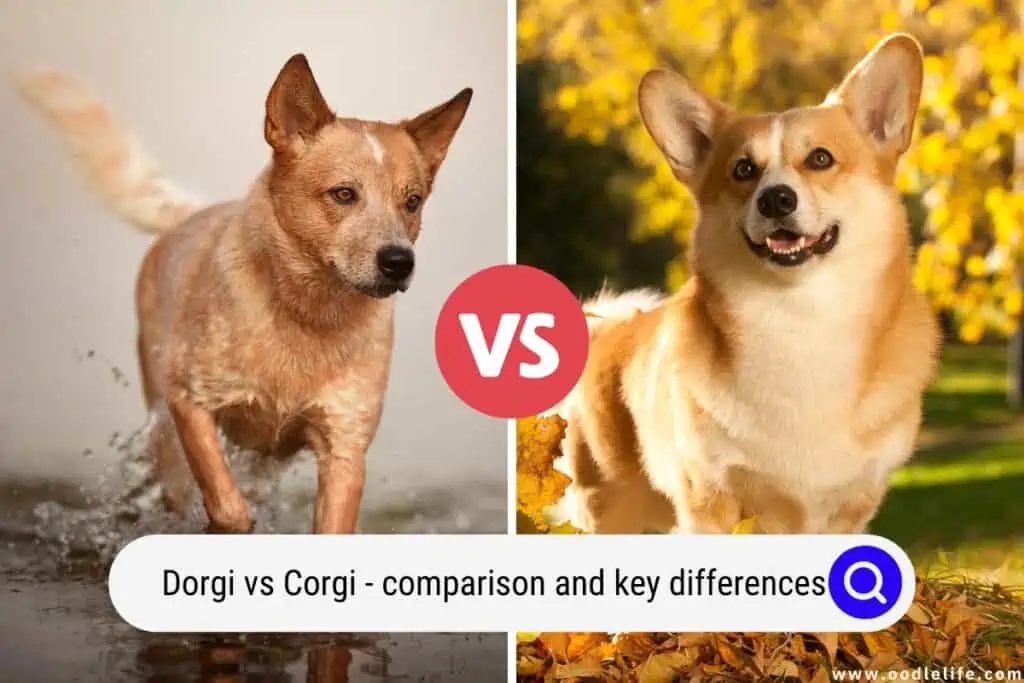
Dorgi vs Corgi: Origins
As a descendant of the Corgi, the Dorgi is a much newer breed. While Corgis date back to the 1100s, Dorgis only became popular in recent decades.
Corgi
Corgis originate from Wales in the 1100s. Originally, they were bred to herd large animals. Due to the small stature of this breed, Corgis could push and nip at the heels of livestock, forcing them toward the desired location.
The name for the breed was derived from the Welsh words cor, meaning dwarf, and ci, meaning dog.
Corgis’ popularity skyrocketed due to Queen Elizabeth’s fondness for the breed.

Dorgi
Although Dorgis likely existed before Queen Elizabeth’s reign, she is credited with the newfound popularity of this breed, as well. One of her beloved Corgis mated with Princess Margaret’s Dachshund, and they gave birth to a Dorgi.
Since then, the Queen continued to breed Dorgis, as did breeders around the world.

Dorgi vs Corgi: Appearances
Because Dorgis are the descendants of Corgis and Dachshunds, they maintain the same short stature as their Corgi parents. Both Corgis and Dorgis also have trademark long backs. However, Corgis are usually heavier than Dorgis.
| Dog | Average Height | Average Weight |
| Dorgi Male | 10-12 inches | 20-28 pounds |
| Dorgi Female | 10-12 inches | 15-22 pounds |
| Corgi Male | 10-12 inches | 22-31 pounds |
| Corgi Female | 10-12 inches | 22-29 pounds |
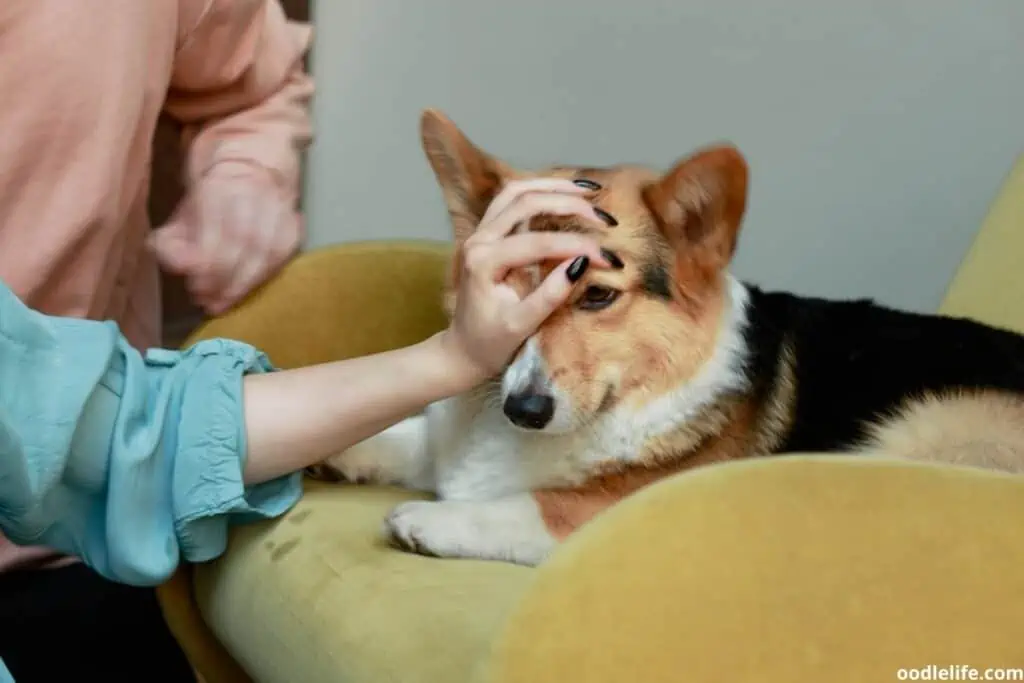
Corgis
If you have ever seen a Corgi, you know that they have distinguishable coats. Their fur is dense, and their double coats add to their fluffiness. Their fur can range from short or medium in length, and it may be in a variety of colors. Possible coat colors include:
- Black and tan
- Sable with or without a white pattern
- Fawn
- Red
Corgis’ nose and eye colors depend on their specific breed. Pembroke Welsh Corgis have brown eyes and black noses. Cardigan Welsh Corgis may have brown or blue eyes and their noses may be black or brown.
Dorgis
You may see Dorgis with the following coat colors:
- Black
- White
- Brown
- Pied
- Red
Additionally, Dorgis’ fur is either smooth or coarse, but almost always short. Dorgis may not have an undercoat like Corgis, so their coats may appear flatter.
Like Pembroke Welsh Corgis, Dorgis have brown eyes and black noses.
Dorgi vs Corgi: Personalities
Throughout the ages, people have fallen in love with the shining personalities of Corgis. Luckily, Dorgis share many of the same traits.
Most Corgis and Dorgis are very intelligent, which is ideal for first-time dog owners. The training process is relatively easy for both breeds.
Both breeds are energetic and playful. Owners love playing games and walking with their Corgis and Dorgis. Their small size also means that they require less exercise than many bigger breeds, which is more attainable for those with busy schedules.
These breeds also embody the traits for which many potential owners search. They are loving, friendly, and loyal.

Corgis
In addition to these wonderful traits, Corgis are even-tempered. Although they are loyal, they are rarely protective to the point of aggression. Once they have been trained and properly socialized, Corgis are great with kids and strangers.
Dorgis
Unfortunately, Dorgis are not quite as gentle as Corgis. They inherit the hunter gene from Dachshunds, which can lead to a level of unpredictability.
Dorgis are more alert and energetic than Corgis. They are also usually more reactive. When trained properly, Dorgis are well-behaved dogs, but still require supervision when spending time with children.
Caring for Corgis and Dorgis
Despite certain key differences, the process of caring for Corgis and Dorgis is very similar.
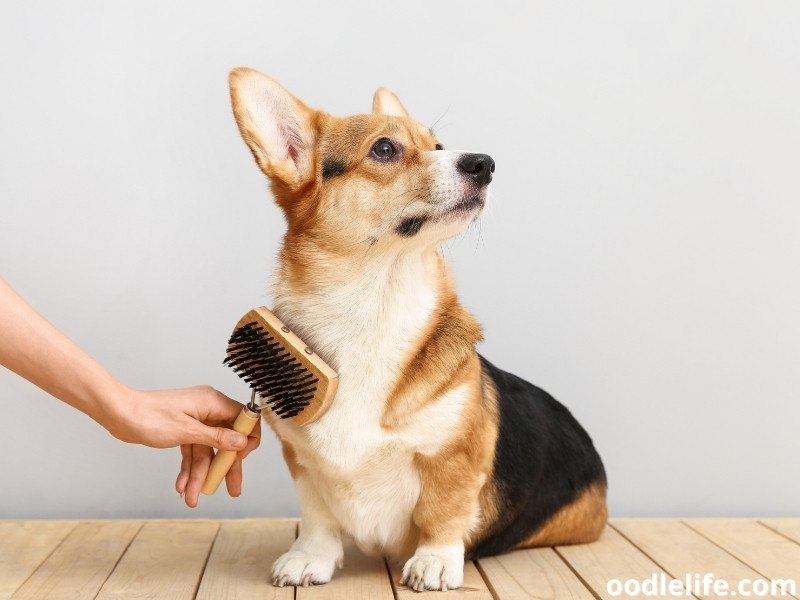
Grooming
Typically, Corgis shed more than Dorgis. Late spring and early summer are known as “shedding season” for Corgis, and they will shed even more during these months.
Once a day, you should brush your Corgi with a brush or comb. This routine keeps your Corgi healthy and minimizes shedding.
On the other hand, Dorgis shed relatively little. Most owners only need to brush their Dorgis a few times a week. Dorgis with thicker coats may require brushing up to once a day.
Dental hygiene is also crucial for all dogs. You should brush your Corgi or Dorgi’s teeth once or twice a week.
Once a week, you should clean your Corgi or Dorgi’s ears with a damp cotton ball. When you clean your dog’s ears, inspect them for signs of infection or obstruction.
When you groom your dog, check his nails. Allowing his nails to grow for too long can hurt his paws. Clipping your Corgi or Dorgi’s nails one to two times a month should suffice.
About once a month, you will probably need to bathe your Corgi or Dorgi. The exact time between baths will depend on your dog’s activity level and the amount of time he spends outdoors.
Feeding
Full-grown Corgis and Dorgis need to eat twice a day. Most will require 2 to 2.5 cups of food daily, depending on their size and activity level.
Certain ingredients that you should avoid feeding your Corgi or Dorgi include:
- Artificial colors
- Artificial flavors
- Preservatives
- Added sugar
- Added salt

Exercise
Corgis and Dorgis are small-sized dogs with short legs, so exercise can quickly exhaust them, but they need to stay active. They should spend at least 45 to 60 minutes exercising daily, which is less than many larger dogs.
Watch your dog for signs of exhaustion, especially during more strenuous exercise. Corgis thrive in cold and near-cold conditions due to their dense double coats, putting them at a higher risk of overheating than most dog breeds.
Dorgis are less likely to overheat because they thrive in both warm and cold conditions. However, they can still become overwhelmed by intense heat and exercise.
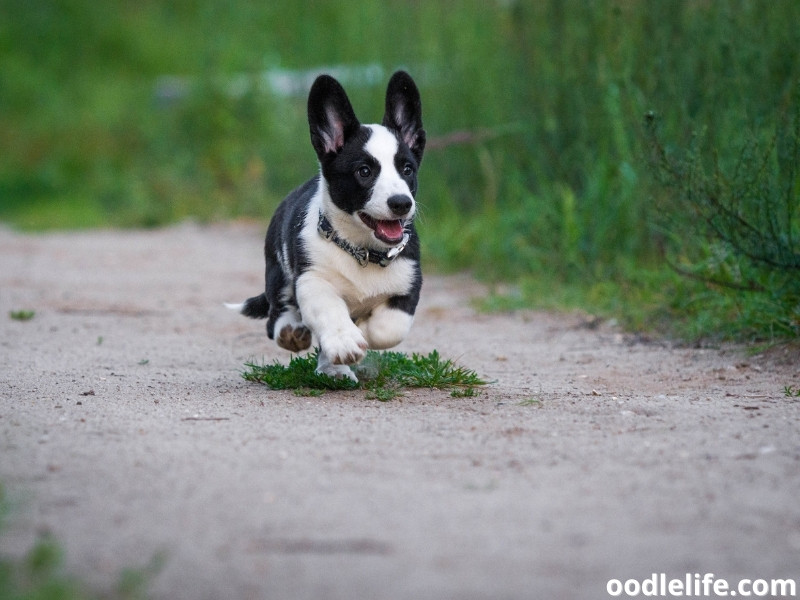
Training
As I mentioned earlier, Corgis and Dorgis are intelligent and relatively easy to train. First-time pet owners may want to take a Corgi home, however, because Dorgis have a stubborn streak that can complicate training.
Both Corgis and Dorgis should experience socialization as early as possible to avoid anxiety and aggression. This step is most important for Dorgis, due to their more aggressive nature.
For more dog training tips, check out this page.
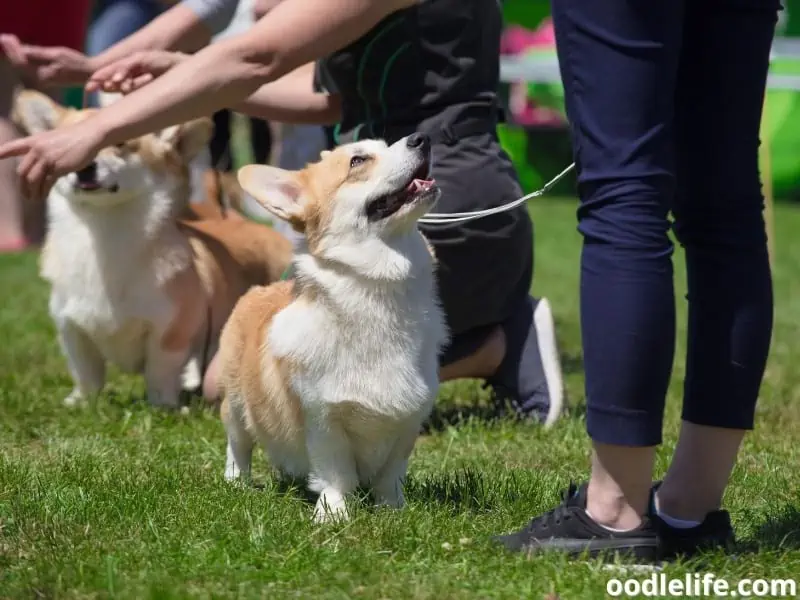
Dorgi vs Corgi: Health Conditions
For the most part, Corgis and Dorgis are prone to different health conditions. Unfortunately, Intervertebral Disc Disease can affect both breeds and can either paralyze your dog or impair the functioning of a limb.

Below are some of the most common conditions for each breed.
Corgis
Corgis are prone to the following conditions:
- Hip dysplasia
- Eye problems
- Progressive retinal atrophy leads to blindness.
- Retinal dysplasia causes vision impairment.
- Eye cataracts lead to blindness.
- Von Willebrand Disease causes uncontrollable bleeding.
- Cutaneous Asthenia is a skin disorder.
- Cystinuria leads to stones in the dog’s kidney, bladder, or ureter.
Dorgis
Although Dorgis are considered healthier than Corgis, they are prone to these conditions:
- Obesity
- Diabetes
- Hyperkeratosis occurs when your dog’s paw pads, nose, and ears become crusty.
- Hair loss
- Eye cataracts
- Elbow dysplasia
Dorgi vs Corgi: Breeding
Dog breeders will likely gain a higher profit from Corgis than Dorgis. To maintain good health, neither breed should reproduce more than once a year. Their gestation period is 60 to 64 days.
Corgis produce larger litters, typically between six and eight puppies. Dorgis, on the other hand, usually breed two to six puppies per litter.
Additionally, breeders can sell Corgis at a higher price. Most Corgis cost between $1,000 and $2,200, while Dorgis cost an average of $500.
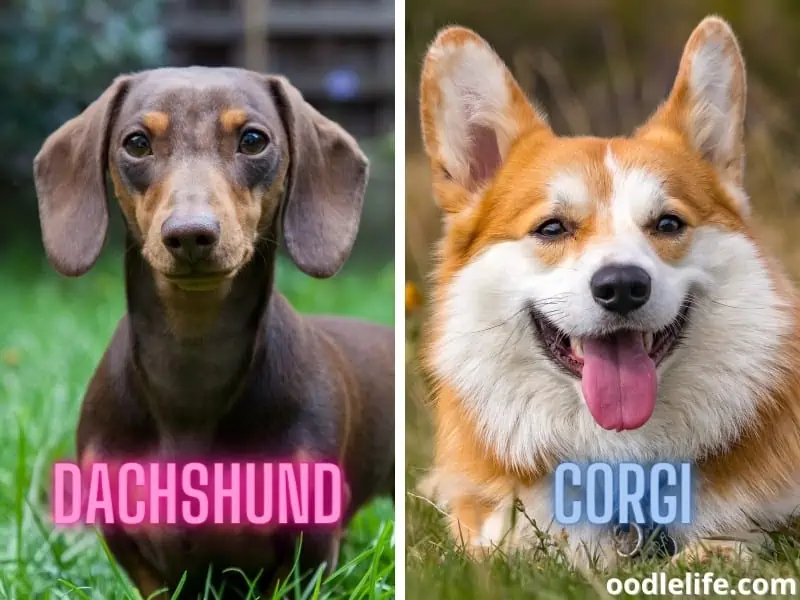
Summary
When choosing between Corgis vs Dorgis, remember these key differences:
- Dorgis have lighter coats and adjust better to a variety of temperatures.
- Corgis and gentler and better with children.
- Corgis are less stubborn and easier to train.
- Dorgis are generally healthier.
- Corgis give birth to more puppies per litter.
- Dorgis are less expensive.
Final Thoughts
As you can see, Corgis and Dorgis are both wonderful companions. Whether you welcome a Corgi or Dorgi into your life, you will be met with love and loyalty.